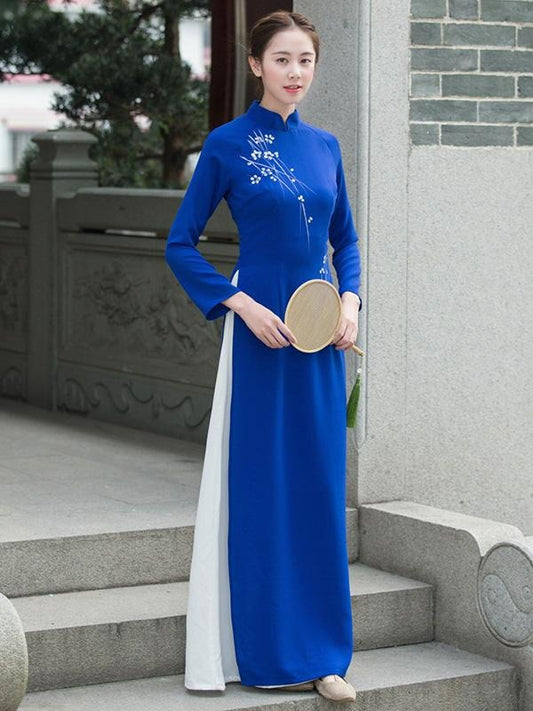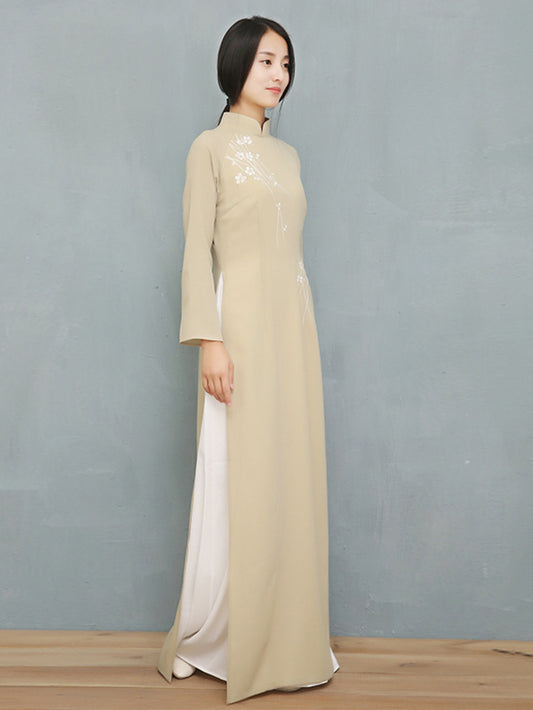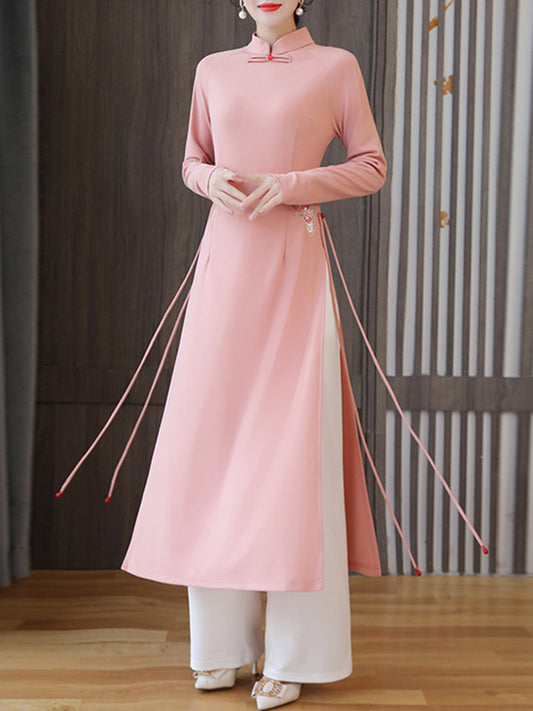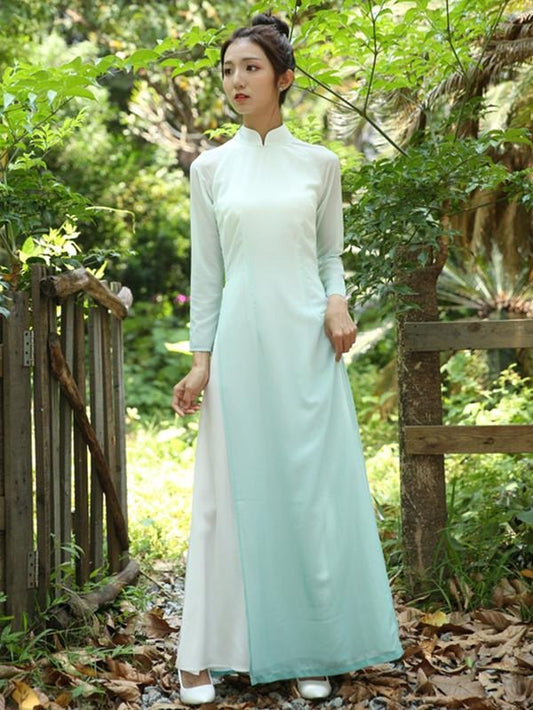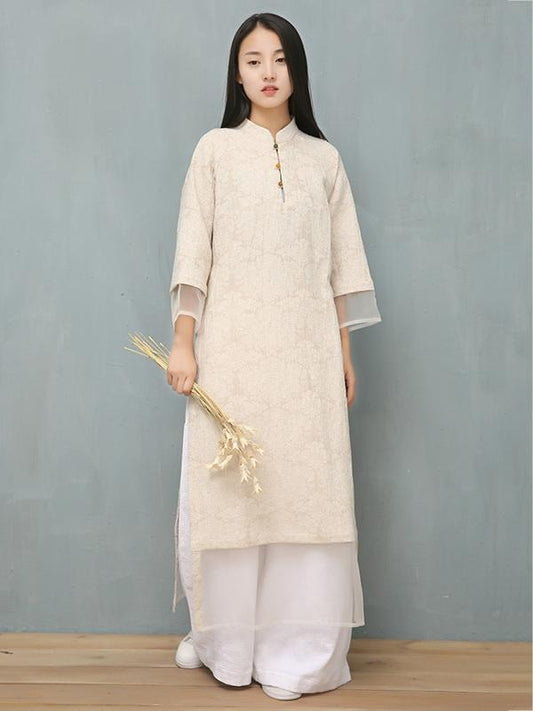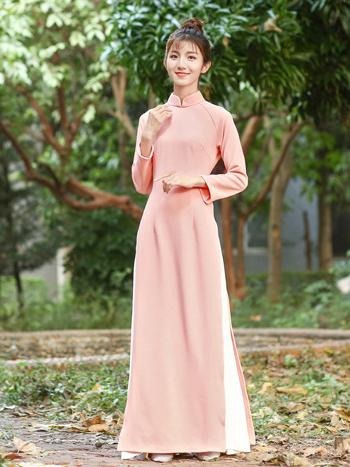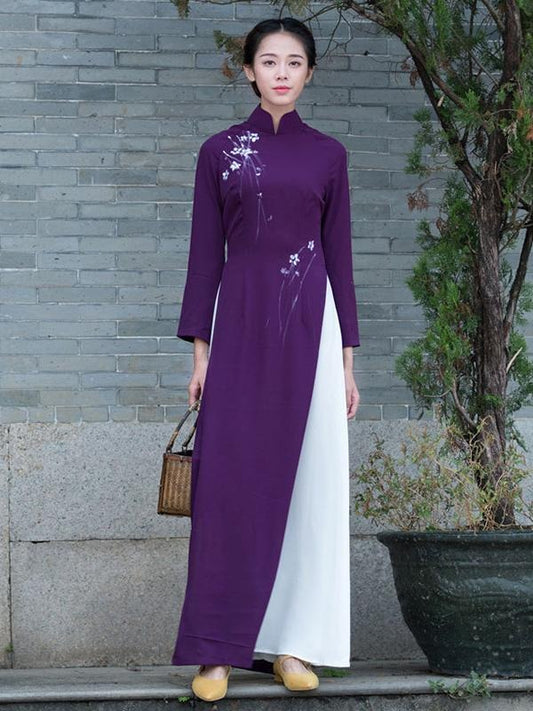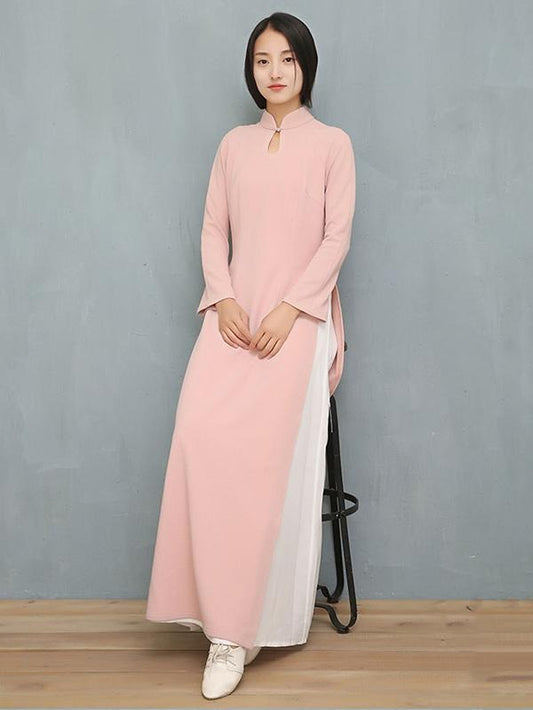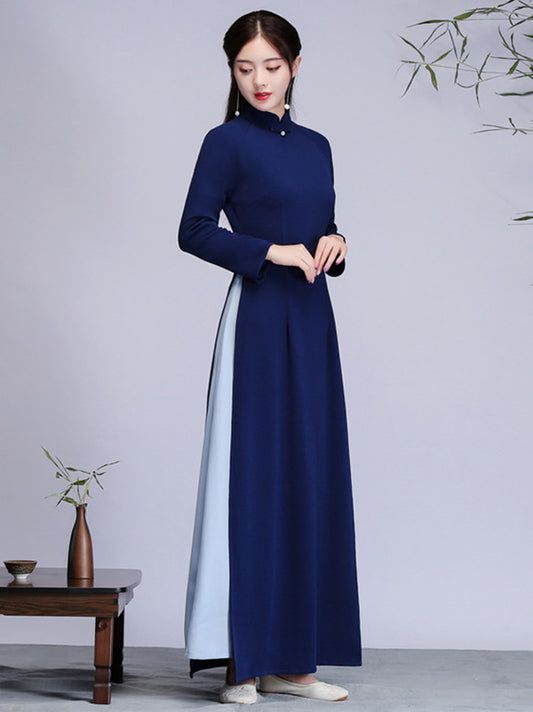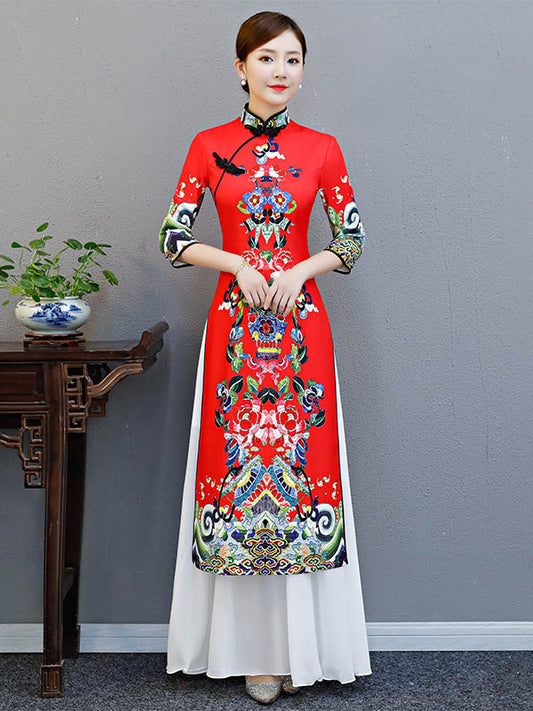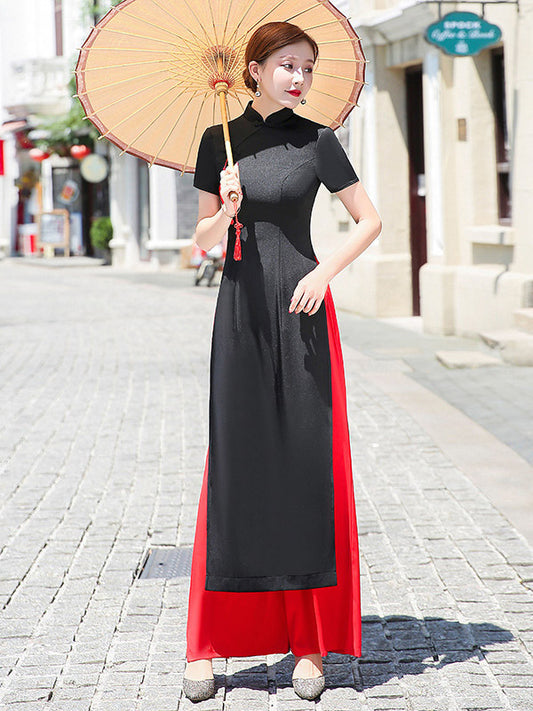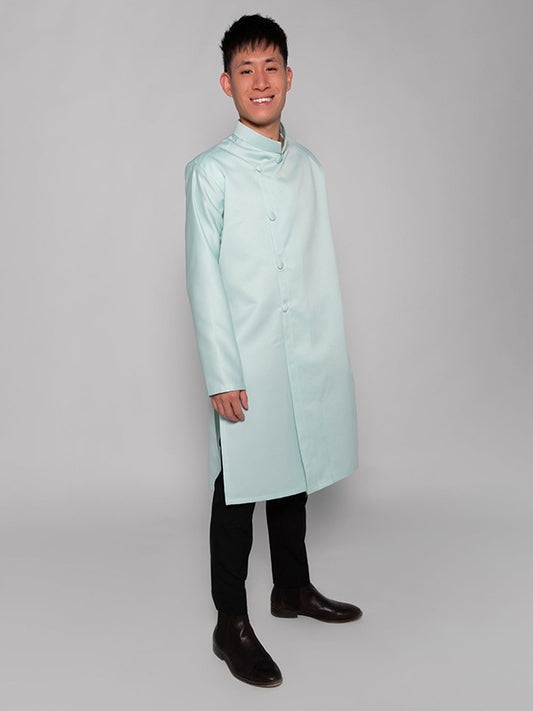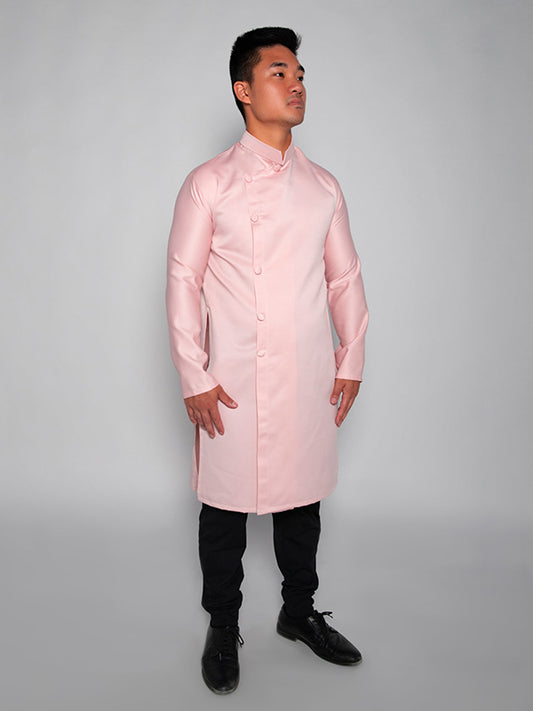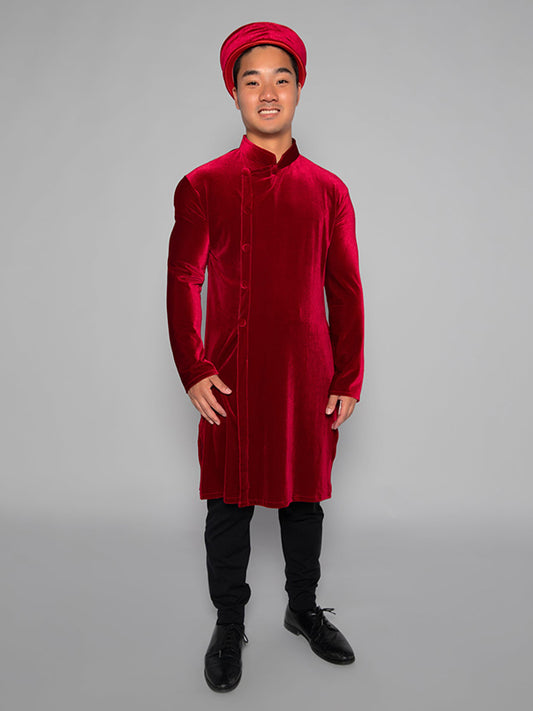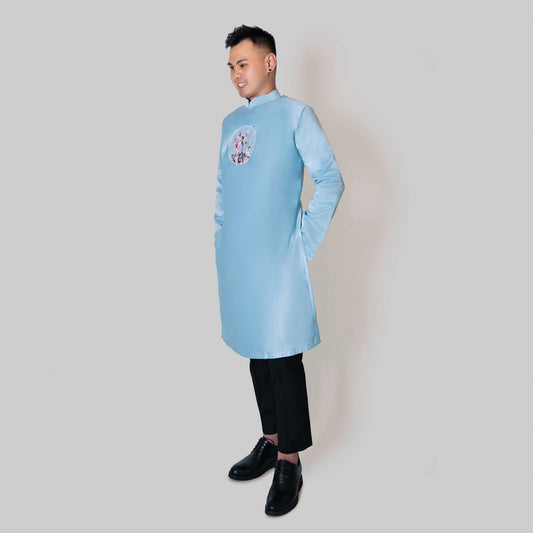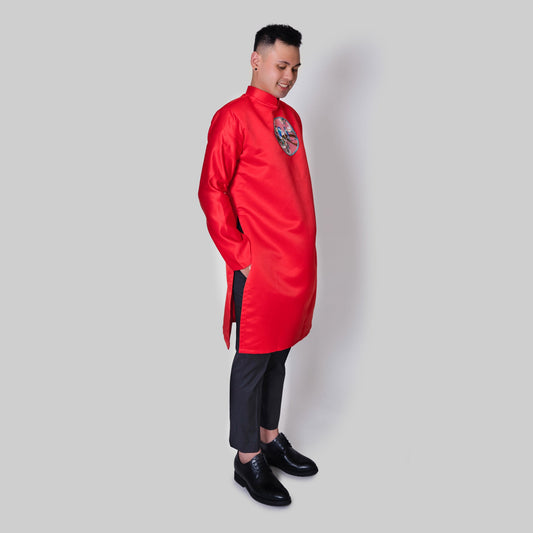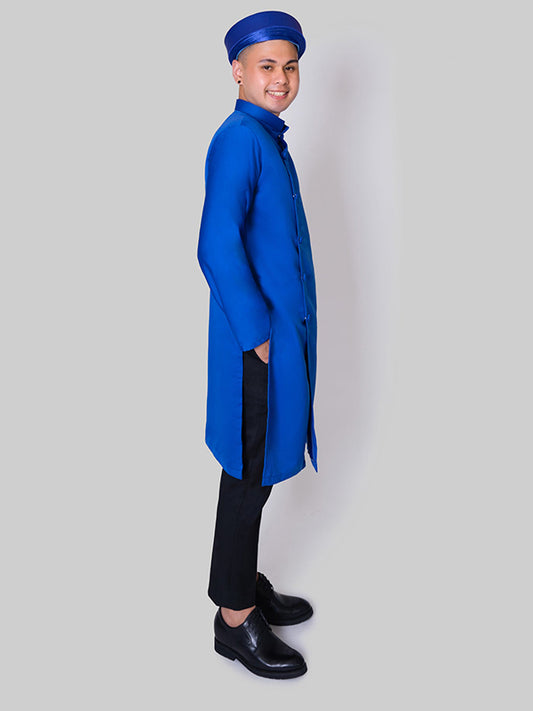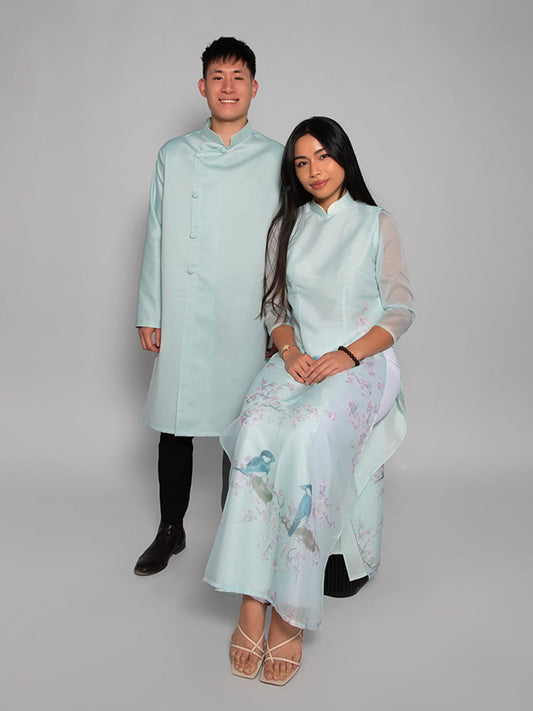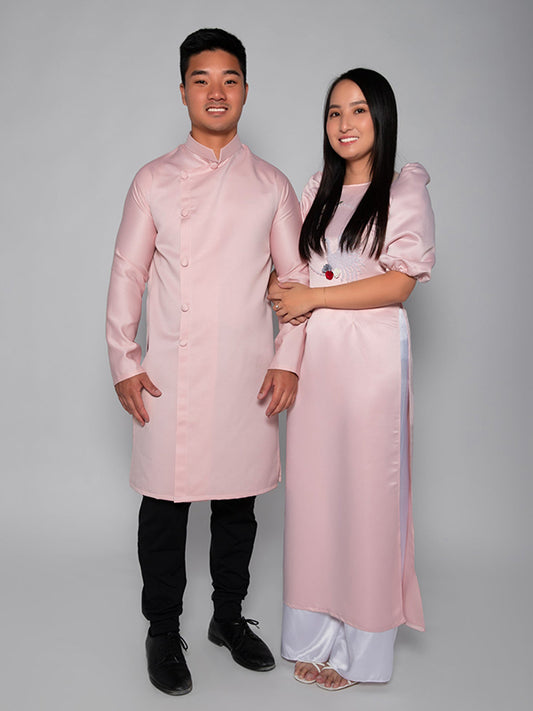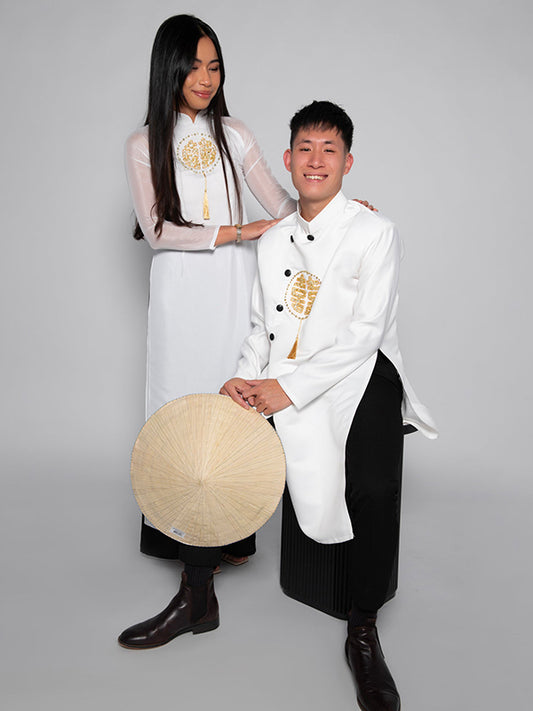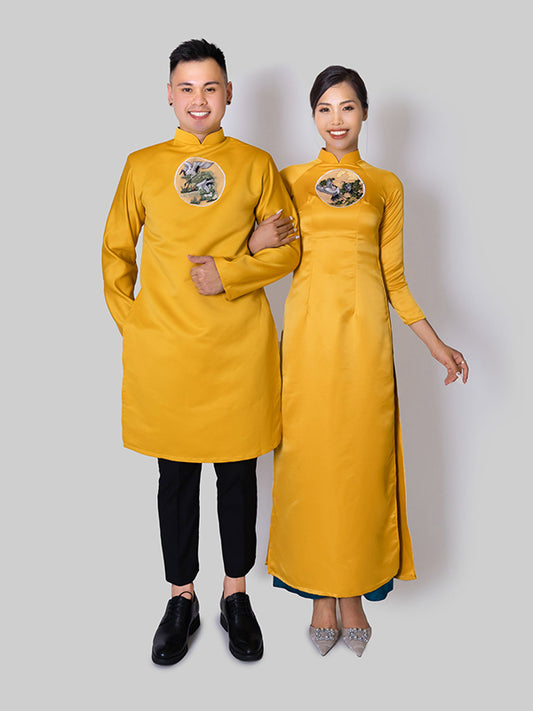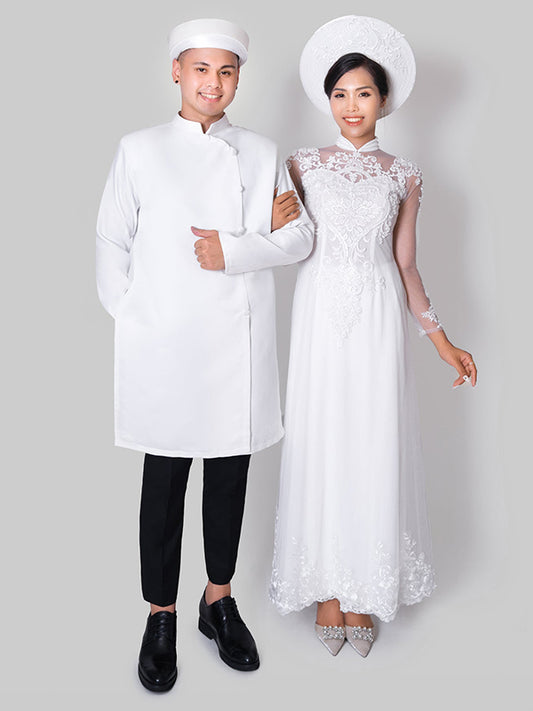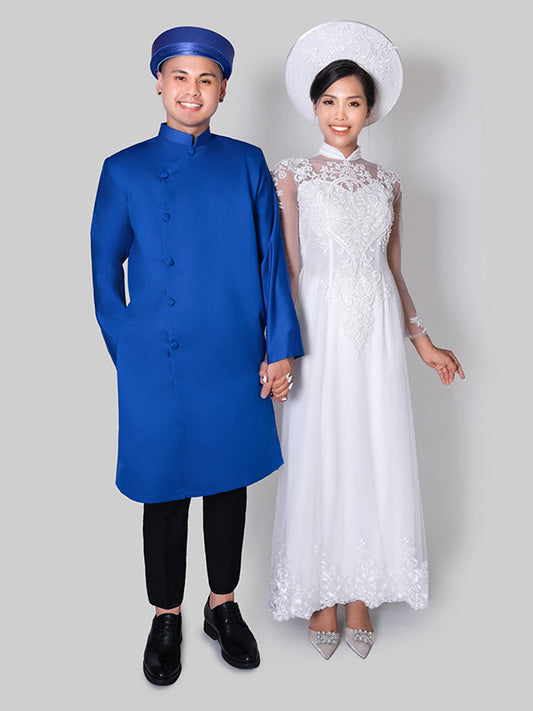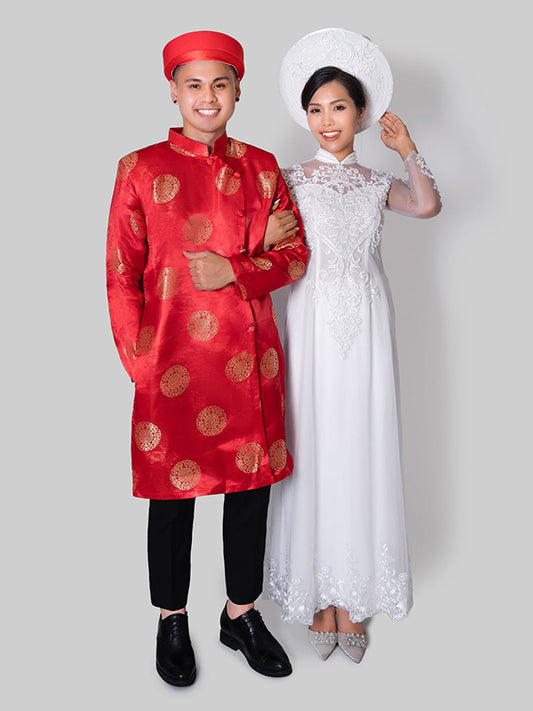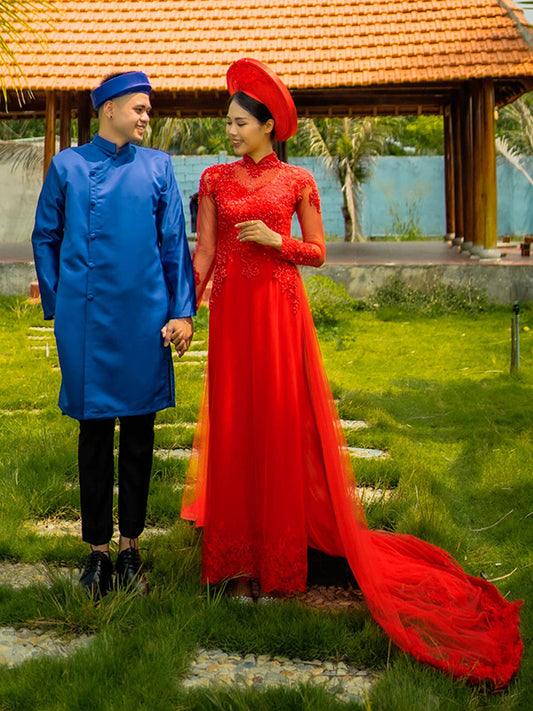
Women Ao Dai
-
Ao Dai Vietnamese Dress Long Flare Sleeves Blue Aodaistyle
Regular price $59.99 USDRegular priceUnit price / per$187.99 USDSale price $59.99 USDSale -
Ao Dai Vietnamese Dress Split Side Lapel Long Aodaistyle
Regular price $59.99 USDRegular priceUnit price / per -
Ao Dai Vietnamese Dress Long Sleeves Aodaistyle
Regular price $59.99 USDRegular priceUnit price / per$99.00 USDSale price $59.99 USDSale -
Ao Dai Vietnamese Dress Long Sleeves Aodaistyle Gradient Green Split Side
Regular price $59.99 USDRegular priceUnit price / per$99.00 USDSale price $59.99 USDSale -
Vietnam Ao Dai Vietnamese Dress Aodaistyle Jacquard Ramie Cotton
Regular price $59.99 USDRegular priceUnit price / per$99.00 USDSale price $59.99 USDSale -
Ao Dai Vietnamese Dress Long Sleeves Aodaistyle
Regular price $59.99 USDRegular priceUnit price / per$99.00 USDSale price $59.99 USDSale -
Ao Dai 2023 Vietnamese Dress Half Sleeves Aodaistyle
Regular price $59.99 USDRegular priceUnit price / per$129.00 USDSale price $59.99 USDSale -
Ao Dai Vietnamese Dress Sleeveless White Aodaistyle
Regular price $53.99 USDRegular priceUnit price / per$187.99 USDSale price $53.99 USDSale -
Ao Dai Vietnamese Dress Long Sleeves Lapel Aodaistyle
Regular price $59.99 USDRegular priceUnit price / per$109.00 USDSale price $59.99 USDSale -
Ao Dai Vietnamese Dress Long Sleeves Blue Aodaistyle
Regular price $49.99 USDRegular priceUnit price / per -
Ao Dai Vietnamese Dress Half Sleeves Two Pieces Aodaistyle
Regular price $99.99 USDRegular priceUnit price / per$149.99 USDSale price $99.99 USDSale -
Vietnamese Ao Dai Dress Short Sleeves Aodaistyle
Regular price $89.99 USDRegular priceUnit price / per$144.99 USDSale price $89.99 USDSale
Ao Dai Men
-
Green Plain Men's Vietnamese Ao Dai Coat
Regular price $79.99 USDRegular priceUnit price / per -
Pink Men's Vietnamese Ao Dai Coat
Regular price $79.99 USDRegular priceUnit price / per -
White Men's Vietnamese Ao Dai Coat
Regular price $79.99 USDRegular priceUnit price / per -
Red Velvet Plain Men's Vietnamese Ao Dai Coat
Regular price $49.99 USDRegular priceUnit price / per -
Father's Light Blue Silk Vietnamese Ao Dai Coat
Regular price $49.99 USDRegular priceUnit price / per -
Father's Yellow Silk Vietnamese Ao Dai Coat
Regular price $49.99 USDRegular priceUnit price / per -
Father's Red Silk Vietnamese Ao Dai Coat
Regular price $49.99 USDRegular priceUnit price / per -
Blue Men's Vietnamese Aodai Coat
Regular price $49.99 USDRegular priceUnit price / per


aodaistyle
Grey Wedding Ao Dai Chiffon And Lace
Share
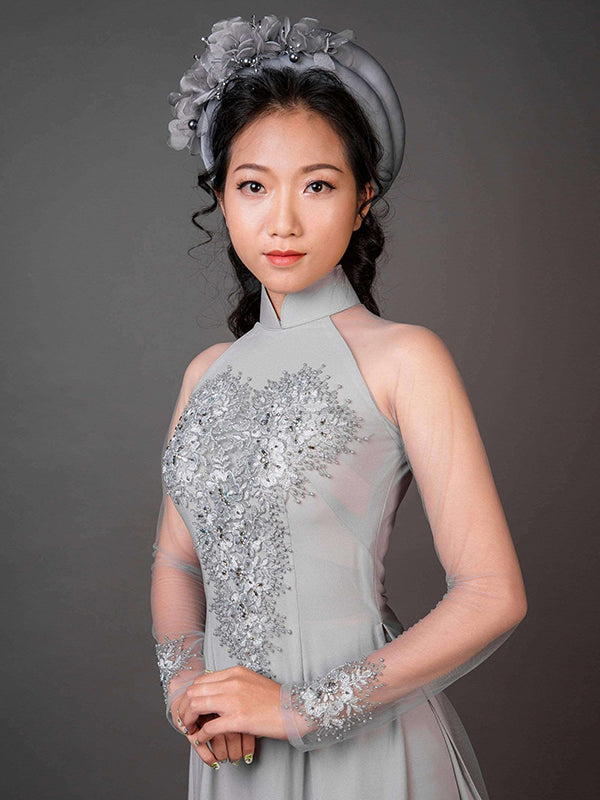
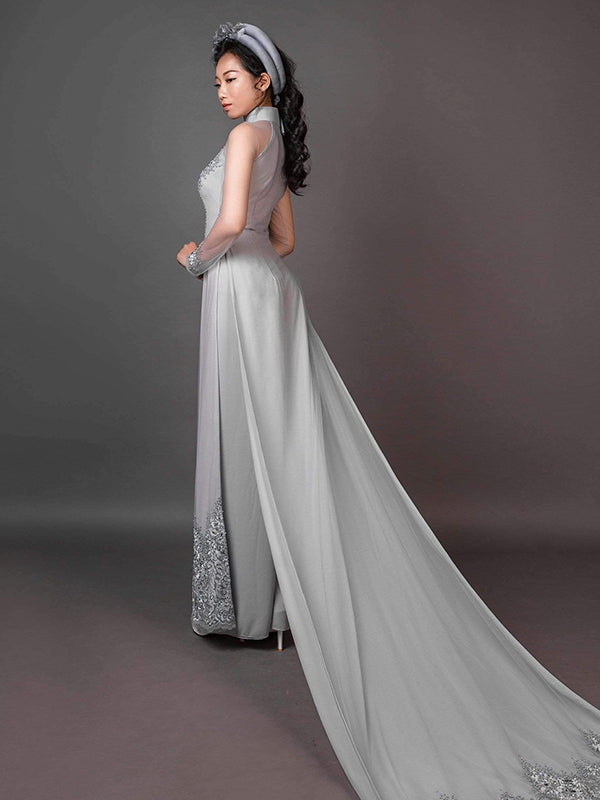




Wedding Ao Dai
-
Green Couple's Wedding Vietnamese Ao Dai
Regular price $99.99 USDRegular priceUnit price / per -
Pink Couple's Wedding Vietnamese Ao Dai
Regular price $99.99 USDRegular priceUnit price / per -
White Chinese Symbol Couple's Vietnamese Ao Dai
Regular price $129.99 USDRegular priceUnit price / per -
Mother And Father's Yellow Vietnamese Ao Dai
Regular price $99.99 USDRegular priceUnit price / per -
White Silk Women's & White Silk Men's Wedding Vietnamese Aodai
Regular price $189.99 USDRegular priceUnit price / per -
White Silk Women's & Blue Silk Men's Wedding Couple Vietnamese Ao Dai
Regular price $189.99 USDRegular priceUnit price / per -
White & Red Coin Wedding Couple Vietnamese Ao Dai
Regular price $199.99 USDRegular priceUnit price / per -
Red Silk Women's & Blue Silk Men's Wedding Couple Vietnamese Ao Dai
Regular price $199.99 USDRegular priceUnit price / per
An Ode to the Áo Dài
The Ao Dai is a kind of traditional Vietnamese clothing and considered one of the most iconic symbols of Vietnam's identity. It features an elegant silhouette with a long, form-fitting tunic and wide-legged pants. Made from flowing fabrics like silk or satin, the ao dai is known for its vibrant colors and graceful draping. It holds deep cultural significance and has evolved over centuries to become a beloved symbol of Vietnamese culture.
The history of the Women Ao Dai dates back to the 18th century when it was worn by the royal court and elite class. However, it wasn't until the 20th century that it became more accessible to the general population. Influenced by French colonialism and Western fashion, the modern ao dai emerged in the 1930s with a higher neckline and tighter fit, gaining popularity as a symbol of elegance and sophistication.
During the Vietnam War in the 1950s and 1960s, the ao dai took on a new meaning as a symbol of national pride and resistance. Women wore it as a form of cultural identity and patriotism, particularly in the southern region of the country. Today, the ao dai is not only reserved for special occasions and cultural events but is also commonly worn as a uniform, office attire, and even wedding attire.
The ao dai's design varies across different regions of Vietnam. In the northern part of the country, it tends to have a more conservative style with a higher neckline and looser fit. In the south, the ao dai is more form-fitting and often reveals the shoulders. Each region also has its preferred color palettes and embroidery styles, showcasing the diversity and beauty of this traditional garment.
Internationally, the ao dai has gained recognition and admiration. It has been showcased on prestigious runways worldwide, becoming a favorite choice for cultural performances and festivals celebrating Vietnamese culture. The timeless elegance and unique design of the ao dai have captivated fashion designers and enthusiasts alike.
Efforts have been made to preserve and promote the ao dai as an essential part of Vietnam's cultural heritage. Fashion designers, organizations, and cultural institutions have organized events and initiatives to highlight its beauty and significance. These efforts ensure that the art of ao dai making is passed down to future generations, keeping the tradition alive.
The ao dai represents more than just a piece of clothing; it encapsulates the spirit, resilience, and beauty of the Vietnamese people. It symbolizes Vietnam's rich cultural history and serves as a source of pride and identity. As Vietnam embraces modernity while cherishing its traditions, the ao dai remains an enduring symbol of Vietnamese culture and a testament to the country's unique heritage.

